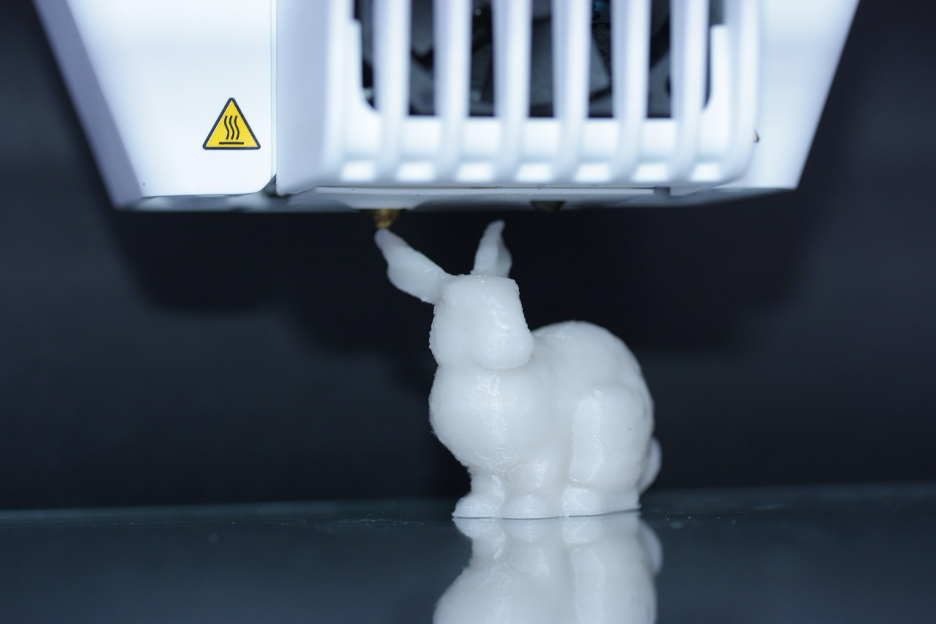 Maths, Physics & Chemistry
Maths, Physics & Chemistry
DNA of Things: how a plastic bunny got DNA
The ever-increasing amount of digital data has led scientists to look for new ways of storing information efficiently. In the last years, a new field of research has evolved around storing information in the sequence of DNA molecules. We have shown a new approach, which allows us to encode data in DNA and store it in everyday objects like coffee cups, reading glasses or 3D-printed bunnies.

Can you imagine storing files inside your everyday objects? This may sound like science fiction, but in our work, we give a glimpse of a future where all products contain their production plans and user manuals inside preventing the loss of information for thousands of years.
In our everyday life, the storage and transmission of information has evolved from written text on paper (kilobyte) to CD-ROMs (megabyte) to flash memory devices (gigabyte and terabyte) within a century. Worldwide, digital data storage has reached hundreds of billions of gigabytes, but as we reach archive limits and old storage formats become obsolete, we are also losing more data than ever.
We are working on a new way of storing information replacing the digital code with a molecular one derived from the DNA. From an information technology point of view, DNA stores the blueprints of life in each of the cells making up every living being on earth. The sequence of the 4 building blocks of DNA, adenine (A), guanine (G), cytosine (C) and thymine (T) can be understood as lines of code - analogous to logical operations on a computer, it tells the cell how to operate. We can synthesize any DNA sequence in the laboratory and thereby write code in the form of DNA ourselves. The idea is to assign two bits of binary code (01 for A, 10 for G, 11 for C and 00 for T) to each building block and thus translate the traditional computational code into a DNA code. By using DNA, we make sure that the information is accessible as long as DNA is the basic code of life.
Two main advantages of DNA data storage stand out compared to traditional digital data storage. First, a small volume of DNA can hold large amounts of data: even 215’000 terabytes per gram of DNA. Second, we can encapsulate DNA in silica particles, which extends the shelf life of DNA up to thousands of years at room temperature.
In our study, we have shown that we can store DNA-encoded files in different everyday objects. As an example, we encoded the three-dimensional design of a bunny figurine and mixed the encapsulated DNA sequence with the precursor material for 3D printing. Reading the digital file of the bunny’s architecture we 3D printed a plastic bunny containing its own blueprints in the form of DNA. Just as in biological systems, a full copy of the file is now stored millions of times over within the whole bunny. To verify this, we clipped off a small piece of its ear and were able to recover the complete blueprint by reading out the DNA code. We dubbed our method DNA of Things (DoT).
To show the versatility of DoT, we encoded a YouTube video in DNA and mixed it with an acrylic glass precursor to fabricate ordinary-looking glasses containing the video. Same as with the bunny, we were successful in reading out the DNA back from a piece of glasses. An interesting aspect of this example is that the glasses containing the file looked identical to ones that did not have it, meaning our process could be a tool for hiding information.
The high price of creating DNA from scratch and reading it out still presents an obstacle for the mass adoption of this technology. However, the price of reading a megabyte worth of DNA has dropped from millions to a couple hundred dollars over the last ten years and will likely continue to decrease. Reading and writing DNA will never get old as long as it is the basic code of life.
In conclusion, we have shown a potential application for using DNA data storage in everyday objects. Going onwards, we want to apply DoT to different materials and find a general recipe to implement it. In the meantime, you can think about the data you would want to leave for later generations and what objects you would like to store them in. Maybe we should store images of floppy disks and CD-ROM in DNA to make sure people in a thousand years still remember them.
Original Article:
Koch J, Gantenbein S, Masania K, Stark W, Erlich Y, Grass R. A DNA-of-things storage architecture to create materials with embedded memory. Nat Biotechnol. 2019;38(1):39-43.Edited by:
Dr. Beata Kusmider , Managing Editor
We thought you might like
A special delivery for malaria-transmitting mosquitoes
Dec 18, 2019 in Health & Physiology | 3.5 min read by Etienne Bilgo , Brian LovettRecovering data you have never seen
Apr 15, 2021 in Maths, Physics & Chemistry | 4.5 min read by Rik VoorhaarMore from Maths, Physics & Chemistry
Testing gravity through the distortion of time
Sep 20, 2024 in Maths, Physics & Chemistry | 3 min read by Sveva CastelloStacking molecular chips in multiple dimensions
Aug 30, 2024 in Maths, Physics & Chemistry | 3 min read by Lucía Gallego , Romain Jamagne , Michel RickhausReversible Anticoagulants: Inspired by Nature, Designed for Safety
Jun 12, 2024 in Maths, Physics & Chemistry | 4 min read by Millicent Dockerill , Nicolas WinssingerDistance-preserving moves always keep a point fixed
May 18, 2024 in Maths, Physics & Chemistry | 4 min read by Shaula FiorelliA resonance triggers chemical reactions between the coldest molecules
Apr 5, 2024 in Maths, Physics & Chemistry | 3 min read by Juliana Park , Wonyl ChoiEditor's picks
Trending now
Popular topics


